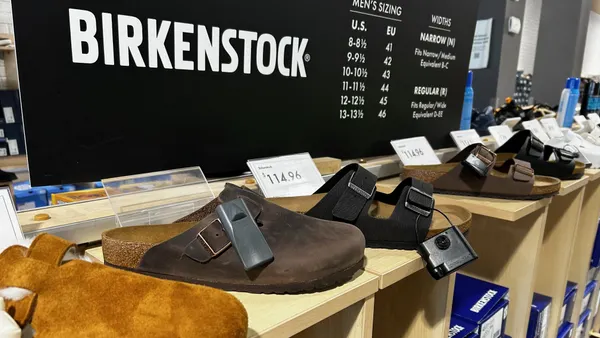Dive Brief:
-
Walmart’s e-commerce marketplace, launched in 2009, is gaining fast, in part because many merchants want to diversify their outlets beyond Amazon’s marketplace, eMarketer reports.
-
Some 65% of sellers on Amazon’s Marketplace say they also sell on eBay, while two-fifths also sell on their own website. Less than 10% say they sell on Rakuten, Walmart or Jet, according to research from marketplace commerce platform Feedvisor emailed to Retail Dive.
-
The highest-volume sellers are the most likely to also sell on other channels, and more than a third of sellers with over $2 million in annual revenue also sell on Walmart — more than double the number of medium-sized sellers and over 1,300% more than smaller ones, according to Feedvisor’s report, “The State of the Amazon Marketplace 2017,” a survey of 1,600 Amazon sellers.
Dive Insight:
After running its third-party marketplace as an afterthought for years, Walmart has picked up the pace following its $3.3 billion acquisition last year of startup Jet.com, itself a marketplace.
The retail giant hasn't broken out sources for e-commerce sales but in its most recent quarter, e-commerce sales (including the marketplace) ballooned 63% with an attendant 69% rise in digital gross merchandise volume, as same-store sales increased 1.4% and traffic to stores rose 1.5%. That rise isn't just thanks to Jet or its widely heralded pricing algorithm — the brick-and-mortar stalwart, with Jet founder Marc Lore at the helm as its new U.S. e-commerce chief, has also been gobbling up pure-play specialty retailers at a rapid clip. Meanwhile, the company's merchandise assortment rose from 10 million to 50 million in about a year, executives say, in part thanks to those acquisitions.
The gravitation of so many Amazon Marketplace sellers to Walmart is natural, considering merchants' desire to diversify their sales channels plus Walmart's recent effort to ramp things up, says Ohad Hagai, VP of marketing at Feedvisor. Many merchants depend on Amazon for more than 80% of sales, and Amazon's dominance has many of them worried. Feedvisor found that more than half (52%) are concerned Amazon will take away their privileges, half are worried about high fees, and 45% are scared that Amazon will compete directly with them.
"To us it wasn't a surprise," Hagai told Retail Dive "We know that Walmart has put in a lot of effort. If anyone can compete at some point with Amazon it could be Walmart because they already have great distribution centers. And I think Walmart understands the need to develop their own marketplace."
While Walmart has a vast network of distribution centers and a massive brick-and-mortar footprint that also provides fulfillment (including new incentives for in-store pickup of online orders), the retailer has a ways to go to match the advantages of Amazon's Marketplace, including the Fulfillment by Amazon program that opens Prime membership to participating sellers, Hagai says. "Sellers are eager to get other strong channels — they want it to happen," he added.
Amazon, which is selling about half of its merchandise via the marketplace, is aware of the increasing competition and seller concerns. In addition to adding programs like a new third-party subscription service, the e-commerce giant recently hosted a gathering of some 1,500 Marketplace sellers in New York to network with each other and Amazon executives and attend workshops about boosting sales worldwide, the first such event since its founding.














